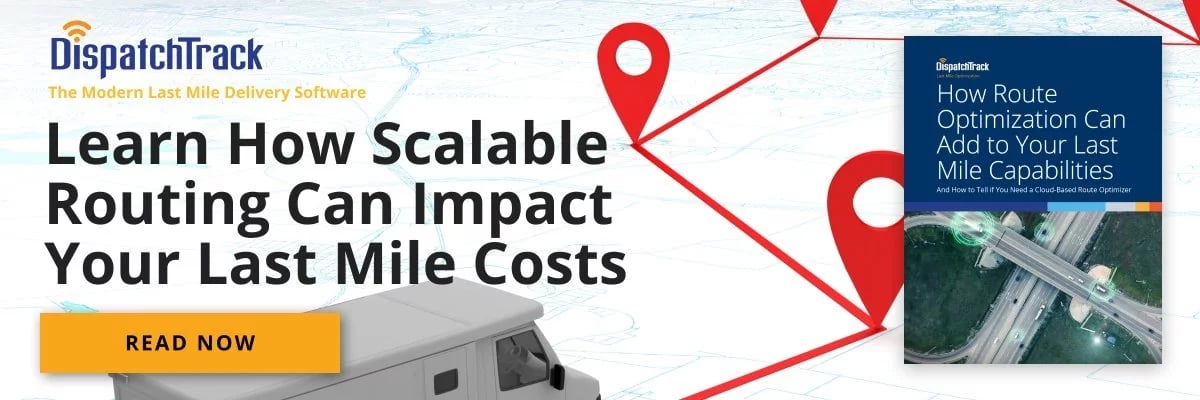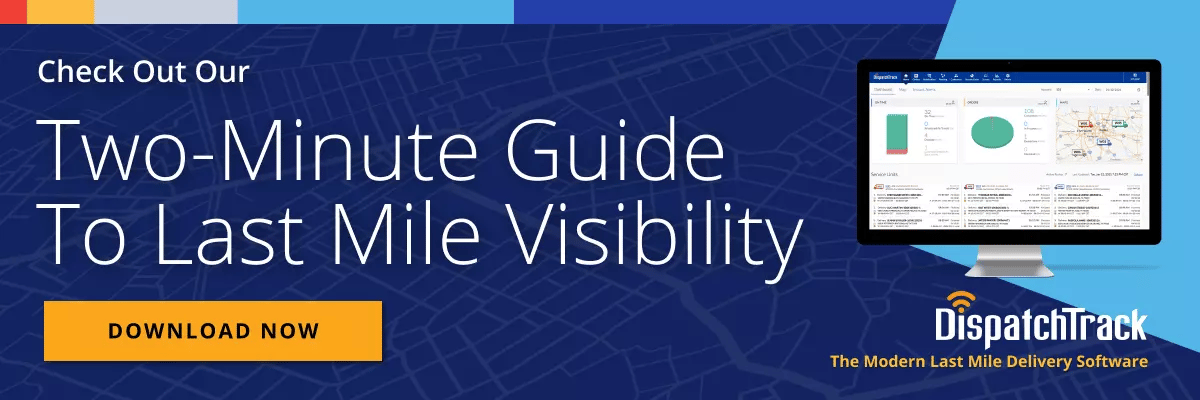The e-commerce market is booming—especially since the COVID-19 pandemic is pushing many away from going to brick-and-mortar stores. Yet, despite the high demand for online shopping, many shippers still have yet to take advantage of last-mile optimization software. According to one report, only 33 percent of shippers are currently using e-commerce logistics solutions.

This could be for any number of reasons, but in all likelihood many of these businesses don’t see all the ways that a last mile logistics solution can help them adapt to the changing demands of consumers. But the right solution really can help you manage e-commerce logistics efficiently while maintaining cost efficiency.
Understanding the Challenges of E-Commerce Logistics
The challenges of handling e-commerce logistics are highly comparable to the challenges of traditional logistics, except e-commerce logistics requires faster order fulfillment.
One of the biggest challenges confronting e-commerce businesses involves the demand for next-day deliveries, same-day deliveries, and other additional last-mile shipping options. Traditional last mile solutions were created specifically for handing orders in batches, which doesn’t offer the necessary flexibility or cost efficiency for e-commerce shippers. E-commerce businesses also have to deal with seasonality and volatile order volumes, which makes flexibility in things like route optimization, dispatching, and customer communication essential.

Plus, there are also difficulties in managing reverse logistics for e-commerce platforms. Customers, after all, expect a cost-free and hassle-free return process. This means shippers will incur additional costs due to customer returns, which in turn, increases business freight expenses.
On top of all that, e-commerce fulfillment is often quite space inefficient. Why? There are a handful of reasons at play:
- Requirements for more buffer stock on hand
- Requirement of a wider variety of SKUs on hand
- Requirement for more space for handling returned orders
- Requirement for more space due to individual order picking and packaging for shipping to end customers
The Importance of Last Mile Solutions in E-Commerce Logistics
Less than full truckloads (or LTLs) used to be the preferred way of reducing shipping costs in traditional logistics management. It is, however, virtually impossible to rely on LTLs and provide customers with quick, free shipping at the same time. Businesses will have to choose between delivery schedules and estimating the LTL freight rate or the likelihood of undercutting shipping expenses.
Consumers may enjoy free shipping, but businesses ultimately have to balance this desire against the operational costs involved. By the same token, customers like next-day or same-day delivery—but more often than not, what consumers really want is visibility and transparency across the entire last mile. This is where the right delivery logistics platform can play a huge role—e.g. By helping you automate last mile communications with customers to decrease phone time and automate tracking and status updates so that customers can always visualize their orders in real time.

Of course, visibility isn’t a substitute for speed and precision. Luckily, advancements in technology are helping businesses balance both costs and customers’ expectations of free or discounted shipping and fast deliveries. Last-mile solutions offer a way of scheduling pick-up and drop-offs more efficiently as well as full visibility on fleets and orders—helping businesses expand their capacity by finding the shortest routes for each delivery and more proactively managing exceptions.
Managing E-Commerce Logistics Effectively
E-commerce logistics is one of the most complex operations around the world. Businesses must research well to know when and how products are ordered, the various shipping options they need to offer, and how to keep shipping costs low. Below are tips for managing e-commerce logistics effectively:
- Provide customers with multiple shipping choices: It's not enough to provide customers with standard shipping options. Businesses must provide them with more choices, such as next-day delivery and free or discounted shipping, keeping in mind that different customers have differing needs. For example, some are willing to pay for the fast shipping as they need the orders quickly while others don't mind waiting since they'd rather not spend on shipping fees. Either way, you need the internal tools to route orders flexibly based on these different demands.
- Use all your shipping options: E-commerce logistics require flexibility, and this can't be achieved by working solely with LTL shipments and traditional small packages. Companies increasingly need to use multiple modes of transportation. For example, companies that have to deliver large and bulky items are better off using a dedicated provider that has expertise in the intricacies of large-sized shipments. This, of course, requires the ability to effectively track and manage shipments across run through 3PLs or carriers without losing control of your brand image.
- Ensure full visibility: You simply can’t expect to provide quick and efficient delivery services while keeping shipping costs low without full visibility. Tracking shipments in real-time is crucial in e-commerce logistics for a variety of reasons. For one, the ability to track satisfies the demand of customers of knowing where their orders are at any given time. For another, it gives you visibility into potential disruptions and exceptions that might arise that require proactive management. Full visibility helps businesses manage their deliveries when unexpected events such as bad weather, sudden road closure, or vehicle breakdown happen. Visibility allows companies to reroute shipments so they can meet their promised delivery times—especially when it’s paired with powerful route optimization functionality.
- Ensure proper integration of systems: Your company needs to ensure that your systems can be integrated and work well together, as disparate, unconnected systems will render even the most advanced solutions ineffective or too costly to use. Companies must ensure that the systems they invest in can be integrated with their current solutions to create streamlined and effective workflows.
E-commerce logistics is complex and filled with risks. Yet, companies have big opportunities as online shopping is fast becoming the new norm. To succeed, businesses must invest in an advanced last-mile solution—one that can be integrated with other systems, provide real-time visibility on orders, and allow businesses to flexibly offer more shipping options.